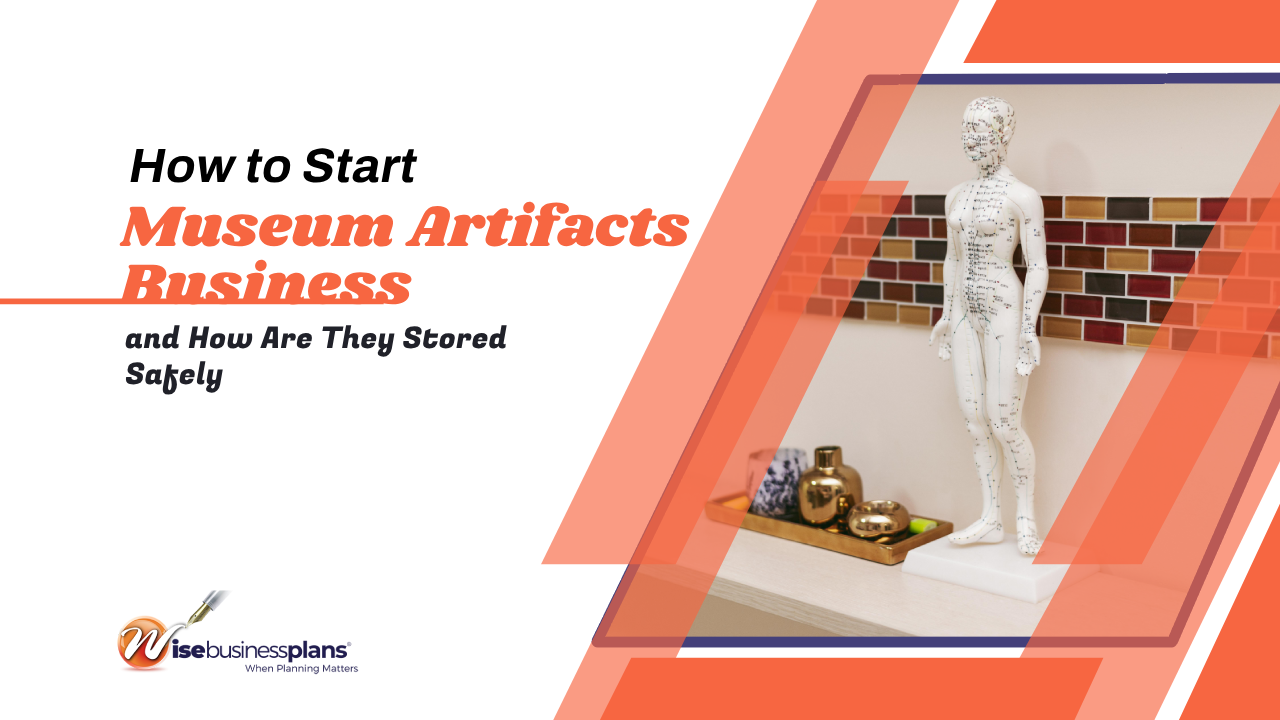How to Start Museum Artifacts Business and How Are They Stored Safely
Museums serve as custodians of cultural heritage, preserving priceless artifacts that illuminate our shared history and creativity. Behind their captivating exhibitions lies a meticulous process of acquisition, preservation, and storage, essential for protecting these treasures for future generations.
For aspiring entrepreneurs entering the museum artifacts business, understanding these processes is crucial not only for preserving cultural significance but also for ensuring the longevity and value of the artifacts.
Safeguarding Artifacts through Climate Control
A crucial aspect of museum storage for sale is maintaining climate control. Temperature and humidity fluctuations can accelerate deterioration, particularly in delicate materials such as textiles, paintings, and organic artifacts. Museums invest in sophisticated HVAC (Heating, Ventilation, and Air Conditioning) systems designed to regulate temperature and humidity levels specific to each type of artifact. For example, paintings may require different conditions than ceramics or metal artifacts.
In a business setting, replicating these climate control measures is paramount for maintaining the value and integrity of artifacts. This involves investing in HVAC systems capable of providing stable environmental conditions within storage and exhibition spaces. Monitoring systems equipped with sensors that detect deviations from ideal conditions are also critical. These systems alert staff promptly, enabling them to take swift corrective action to prevent potential damage.
Acquiring and Curating Artifacts
The journey of a museum artifact typically begins with acquisition. Whether acquired through purchases, donations, or loans, careful consideration of the artifact’s historical or artistic significance, legal provenance, and condition is essential. Establishing robust relationships with collectors, auction houses, and cultural institutions facilitates access to valuable artifacts. Curating involves selecting artifacts that align with the museum’s mission, conducting scholarly research, and preparing them for exhibition or storage.
For a business, understanding market demand for specific artifacts guides acquisition decisions and exhibition themes. Ethical considerations, such as ensuring artifacts were obtained legally and ethically, are crucial. This foundational step not only shapes the business’s collection but also influences its reputation within the cultural community.
Handling and Packaging Artifacts
Proper handling and packaging are fundamental to artifact preservation. Museum professionals undergo rigorous training in handling fragile or valuable items to minimize the risk of physical damage. Acid-free materials such as tissue paper and archival-grade padding are used to cushion artifacts during transport and storage, protecting against scratches and abrasions.
In a business context, implementing standardized procedures for packing and unpacking artifacts ensures consistency and reduces the risk of accidents. Specialized storage containers, such as acid-free boxes for light-sensitive materials, enhance protection while allowing controlled access for research and exhibition purposes.
Customized Storage Solutions
Not all artifacts have the same storage requirements. Customized solutions tailored to the specific needs of each artifact type are crucial for long-term preservation. Museums utilize various storage fixtures made from materials like archival-grade plastics or powder-coated steel, along with textile conservation mounts, to provide adequate support without causing damage or distortion.
For a business managing artifacts, investing in these customized storage solutions is essential. Understanding the unique storage needs—from sculptures and textiles to documents and archaeological finds—ensures artifacts remain stable and well-preserved over time. This proactive approach protects artifacts from physical damage and enhances their appeal to collectors and researchers.
Security Measures and Collections Management
Preserving cultural heritage also involves protecting artifacts from theft, vandalism, and natural disasters. Museums deploy advanced security systems such as surveillance cameras, motion sensors, and access control measures to monitor and safeguard their collections. Similarly, businesses entering the museum artifacts field must prioritize security to protect their investments and maintain credibility.
Implementing comprehensive security protocols—robust alarm systems, regular security audits, and controlled access measures—ensures artifacts remain secure. Collections management practices, facilitated by software that tracks artifact histories, conditions, and conservation efforts, support informed decision-making and proactive preservation efforts.
Conclusion
Starting a museum artifacts business requires a commitment to preserving cultural heritage while navigating the complexities of acquisition, preservation, and exhibition. By investing in climate-controlled environments, implementing best practices in artifact handling and packaging, deploying customized storage solutions, prioritizing stringent security measures, and adopting comprehensive collections management practices, businesses can safeguard artifacts and uphold their cultural and historical significance.
Success in the museum artifacts business hinges on balancing preservation with accessibility, ensuring these invaluable treasures continue to inspire and educate audiences worldwide for generations to come.















